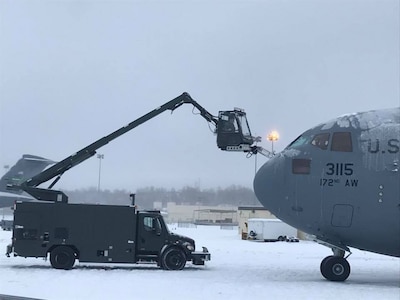By Lisa Ferdinando DoD News, Defense Media Activity
WASHINGTON, Feb. 12, 2018 — U.S. security sector assistance
is an important tool to build partner capacity and strengthen regional
security, officials said today during a panel discussion at the Center for
Strategic and International Studies here.
The Fiscal Year 2017 National Defense Authorization Act
required reforms to U.S. security sector assistance, including largely
consolidating more than 120 different authorities, Greg Pollock, acting deputy
assistant secretary of defense for security cooperation, said.
Pollock and Army Brig. Gen. Antonio Fletcher, U.S. Southern
Command’s director of strategy, policy and plans, were among the speakers at
the discussion, titled “Oversight and Accountability in U.S. Security Sector
Assistance: Seeking Return on Investment.”
A key authority for the Defense Department is the Section
333 Global Train and Equip Authority, which seeks real strategic effects
consistent with the National Defense Strategy, Pollock explained.
“It's a wide-reaching effort that really touches every
combatant command, all of the services, so maintaining that network and
creating a partnership across those echelons is really central to my day-to-day
work,” he said.
Evolving Challenges, Long-Term Strategy
The new authorities allow flexibility to fund both
priorities both short-term and long-term across geography and domains, Pollock
said.
"We're out there looking at the big picture and trying
to make investments that meet all of our respective national security
interests,” he said. “The security environment will evolve, but our interests
won't evolve.”
The U.S. security support around the globe is an important
investment, he explained.
"We hope that we can depend upon the partnership of
both our current allies and more and more the sort of partners that we're
investing in out there, whether it’s in Eastern Europe on the margins of Russia
or in Southeast Asia [or] East Asia," Pollock said.
The Defense Department will continue to ensure the combatant
commands have the resources they need to “work by, with and through partners to
deal with local sources of instability and potentially terrorism as well,"
he said.
The challenge, he explained, is to ensure thoughtful
investments for “partners that are in the fight today, but also investing in
partners that we want to count on for the long haul, particularly in respect to
some of the near-peer competitors out there."
Pollock highlighted the importance of a collaborative,
interagency and long-term approach, including efforts with the State
Department.
He described this as a “very exciting moment” in which
security cooperation is situated into the wider framework of foreign policy and
defense strategy, and welcomed efforts to further boost engagements with the
State Department.
Southcom Perspective
Southcom’s theater engagement strategy is a long-term effort
built on themes that resonate in the entire area of responsibility, Fletcher
said. Those themes include human rights and countering transregional and
transnational threat networks.
"I think too often where there is risk to force [and]
risk to mission, we make some short-term decisions that may not be in the best
interests long term,” he said. “So what we are trying to do in Southcom is
actually take a very long look, long-term approach to our engagements in the
[area of responsibility]."
The aim includes improving resilience of nations in
responding to humanitarian assistance or disaster relief. With the investment
comes the expectation that the recipient allies and partners will share what
they learned with their regional partners, he said. Colombia is a great example
of a success story, he pointed out.
Fletcher highlighted the importance of strengthening the
no-commissioned officer corps of partner nations. "At the end of the day,
if you look at the American military and DoD, really it is our NCO corps that
sets us apart from most of the militaries around the world.”
A central focus of the Southcom strategy is the importance
of an interagency and joint force approach, he explained. "It takes the
whole-of-government, it takes a complete team to be effective," he added.
"We built our strategy around that, and we think it will pay dividends
going forward."







